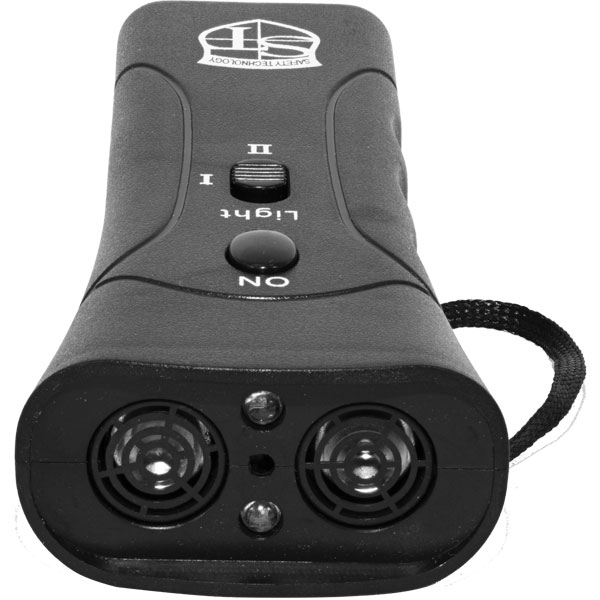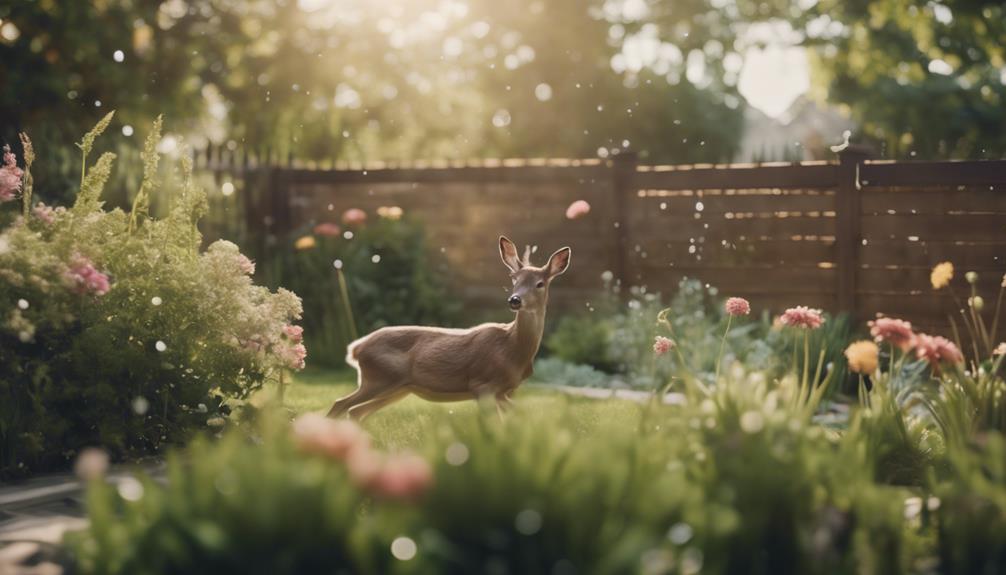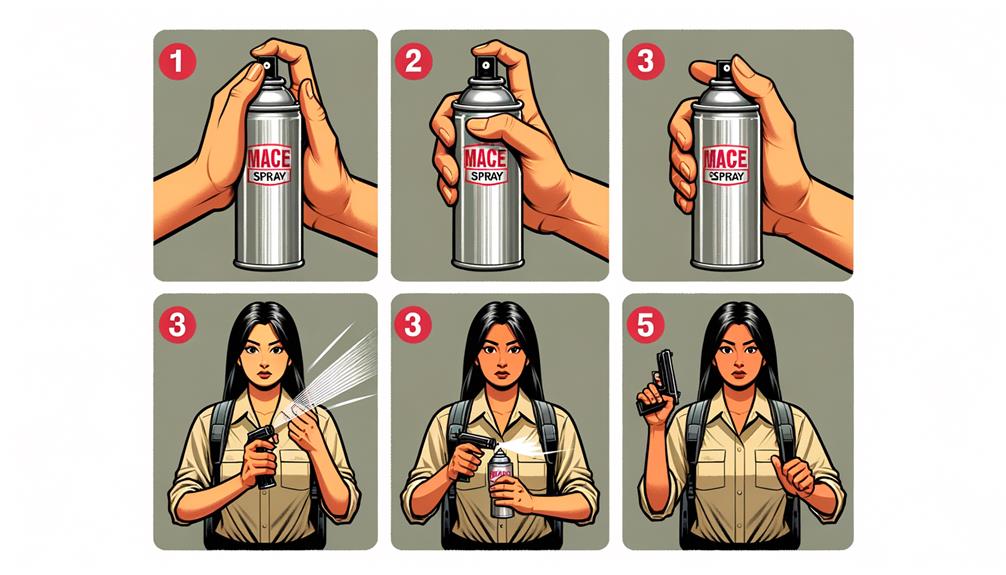
Brainstorm Security Shop

For Orders Over $199

On Any Of Our Products

Details On Refund Page
You’ve likely faced the challenge of keeping unwelcome animals away from your garden or home without resorting to harsh methods that could harm the environment or your pets. While many options exist, from ultrasonic devices to chemical deterrents, natural repellents are gaining traction for their safety and effectiveness. But how do you choose the right one? It’s crucial to understand the pros and cons of each type, and how they specifically align with your needs. Consider what happens when these repellents are put to the test in real-world scenarios—will they stand up to the challenge? Let’s explore the possibilities and find out.
Understanding the various types of animal repellents can help you choose the most effective solution for your specific needs. Let’s delve into the common categories.
Chemical repellents are widely used for their effectiveness. They often contain substances that taste or smell unpleasant to animals, deterring them from your garden or property. You’ll find sprays and granules that you can apply to the surfaces where animals frequent. However, you’ll need to reapply these after rain or watering.
Physical barriers, such as fences or netting, provide a non-toxic way to keep animals out. They’re ideal if you’re concerned about the environmental impact of chemicals. Installing them can be more labor-intensive, but once in place, they require little maintenance.
Another popular option is natural repellents. These use ingredients like essential oils or spicy peppers to create an unwelcome environment for pests. They’re safer around pets and children, and they often blend seamlessly into your garden without harming the local wildlife.
Each type has its pros and cons, depending on your situation and the specific animals you’re trying to deter. Assessing these options can steer you toward the right choice, ensuring your space remains undisturbed and thriving.

Let’s now examine ultrasonic repellents, which offer a modern, non-invasive method to discourage unwanted animals. These devices work by emitting high-frequency sounds that are unsettling to pests but generally inaudible to humans. You’ll find them particularly handy if you’re dealing with rodents, raccoons, or deer, among other animals.
When you’re choosing an ultrasonic repellent, consider the specific frequencies it uses. Different animals react to different frequencies, so it’s crucial to match the device to the pests you’re targeting. Also, look at the effective range. Some models cover larger areas than others, making them ideal for outdoor spaces like gardens or lawns.
You should also pay attention to durability and weather resistance, especially if the device will be used outdoors. Look for models that can withstand various weather conditions—rain, snow, and extreme temperatures. This ensures your repellent remains functional year-round.
Finally, give some thought to the power source. Many ultrasonic repellents are battery-operated, while others might require a power outlet. Solar-powered options are also available, offering a more sustainable choice without the hassle of changing batteries.
Choosing the right ultrasonic repellent involves understanding these features to effectively keep pests at bay without causing harm.
Natural repellents offer a safer alternative for your family and pets, utilizing ingredients like essential oils to deter pests effectively. When you choose natural options, you’re not only protecting your loved ones from harmful chemicals but also contributing to a healthier environment. These repellents often use components like citronella, eucalyptus, and peppermint, which are known for their pest-repellent properties without the adverse effects associated with synthetic substances.
You’ll find that natural repellents aren’t just effective against a wide range of animals, but they also offer a more pleasant scent compared to the often harsh odors of chemical repellents. This makes them ideal for use both indoors and outdoors, wherever you need protection without compromising air quality or comfort. Moreover, these products are generally biodegradable, reducing your environmental footprint.
Another significant benefit is their safety for use around plants. Unlike some harsh chemicals that can damage your garden, natural repellents can be used near vegetation without the risk of toxicity. This is especially important if you’re cultivating organic fruits and vegetables. Opting for natural solutions means you’re ensuring the well-being of your garden ecosystem while keeping unwanted pests at bay.

Chemical repellents, unlike their natural counterparts, rely on synthetic chemicals to deter various pests and animals. You’ll find these products range from sprays and pellets to electronic devices that emit substances not found in nature. They’re especially effective because they’ve been scientifically formulated to target specific sensory mechanisms of animals, causing them to avoid the treated areas.
You might wonder about their safety. Generally, these repellents are safe when you use them according to the label’s instructions. However, it’s crucial you handle them with care, as the active ingredients can be harmful if ingested or directly contacted with skin over prolonged periods. It’s also worth noting that environmental impacts are a concern. Some chemical repellents can affect non-target species and may contribute to pollution if not used responsibly.
In terms of application, you’ll appreciate the convenience of chemical repellents. They often come ready to use, and you can easily apply them over large areas or in specific zones. Their effectiveness typically lasts longer than natural options, reducing the frequency of reapplication. Just remember to store these products away from pets and children to avoid accidental exposure.
Discover which repellents work best for deterring specific animals like deer, rabbits, and squirrels. When you’re dealing with deer, consider using odor-based repellents that contain putrescent egg solids or bloodmeal. These ingredients mimic the scent of decay or predators, effectively keeping deer at bay. You’ll find these repellents in spray forms which you can easily apply around the perimeter of your garden.
For rabbits, your best bet is to go for a taste deterrent. Rabbits are less likely to return to an area where they’ve encountered an unpleasant taste. Look for repellents that contain capsaicin, which adds a spicy note that rabbits generally dislike. These are available in both granular and liquid forms, allowing you to choose based on your application preference.
Squirrels can be trickier, but a combination of auditory deterrents and spicy repellents often works well. Ultrasonic repellents can disturb squirrels without being noticeable to humans. Additionally, spraying a capsaicin-based repellent around plants can prevent squirrels from nibbling on them.
Each situation might require a bit of trial and error to find the most effective solution, but starting with these targeted strategies will help you protect your garden from these common pests.
While exploring effective repellents for various animals, it’s important to also consider the safety of your pets and children when using these products. You’ll want to ensure that the repellents you choose aren’t just effective, but also safe for the whole family, including your furry friends and little ones.
Firstly, always check the label for any warnings or adverse effects that could impact pets or children. Some products, especially those containing chemicals, can be harmful if ingested or if they come into contact with skin. It’s crucial to opt for repellents that are marked as safe for use around both pets and children.
Moreover, consider the method of application. Sprays and granules can easily be accessed by curious pets and kids. If you’re using these forms, it’s best to apply them in areas that are out of reach or when pets and children aren’t present.
Lastly, natural or ultrasonic repellents often provide a safer alternative, as they typically don’t involve harmful chemicals. However, even these should be used with caution, ensuring that they don’t cause any unintended distress to animals or young children sensitive to high frequencies or certain natural scents.
Always prioritize safety to keep your home safe and sound for everyone.

To maximize the effectiveness of animal repellents, ensure you apply them consistently and according to the manufacturer’s instructions. It’s also crucial to choose the right type of repellent for the specific animal you’re dealing with. If you’re unsure, don’t hesitate to ask for advice at your local store or research online for insights specific to your area’s wildlife.
Remember, placement matters. You’ve got to strategically place repellents where they’ll be most effective. For instance, if you’re using granules, sprinkle them around the perimeter of the area you want to protect. For sprays, target entry points and areas where animals are frequently seen.
Timing is key, too. Reapply repellents after heavy rain or as often as the product recommends. This is vital because weather conditions can diminish the product’s effectiveness.
Don’t just rely on repellents alone. Combine them with other deterrents like fencing, noise devices, or motion-activated lights to enhance your overall strategy. This multi-faceted approach makes it tougher for animals to adapt and increases your chances of keeping them at bay.
Lastly, keep track of your results and adjust as needed. Sometimes, a slight change in strategy can make all the difference in effectiveness.
You’ve explored various repellents, from ultrasonic to natural and chemical options.
For a safe and eco-friendly choice, natural repellents with essential oils like citronella and peppermint are your best bet. They’re not only effective against pests but also safe for your family and pets.
Remember to consider safety for children and pets, and use repellents effectively.
Choose wisely to protect your property while preserving nature’s balance.

Brainstorm Security Shop
1867 Caravan Trail
Ste 105
Jacksonville, FL 32216
Call us toll free: (800) 859-5566